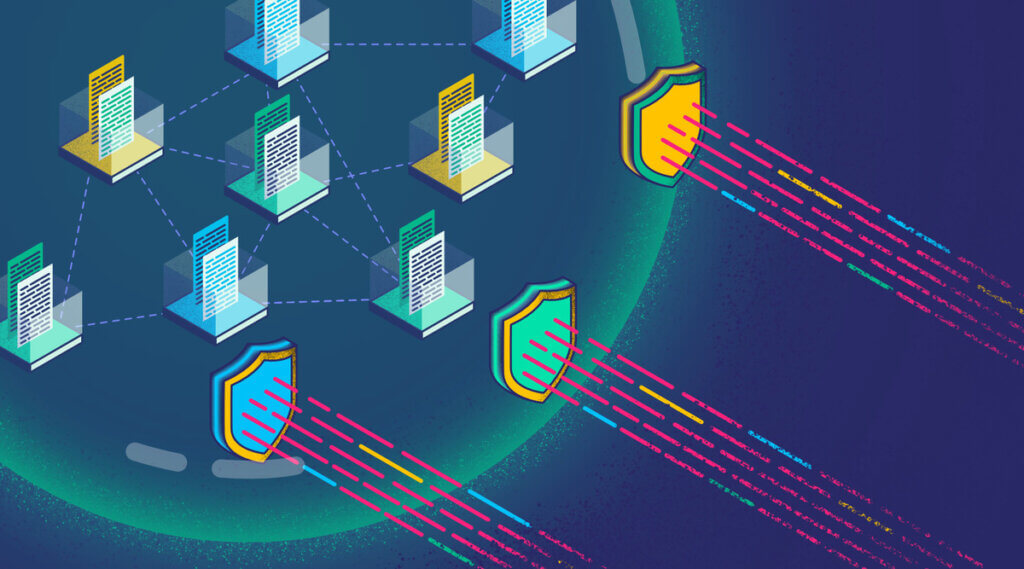DevSecOps vs DevOps: What are the Differences?
The modern technology landscape is ever-changing, with an increasing focus on methodologies and practices. Recently we’re seeing a clash between two of the newer and most…
Whether you are just starting your observability journey or already are an expert, our courses will help advance your knowledge and practical skills.
Expert insight, best practices and information on everything related to Observability issues, trends and solutions.
Explore our guides on a broad range of observability related topics.


With the shift from traditional monolithic applications to the distributed microservices of DevOps, there is a need for a similar change in operational security policies. For example, how do you secure a disparate number of micro-systems operating with multiple access credentials across a multi-level organization? DevSecOps (Devops security) answers this question by integrating application security considerations at every level of your development process.
While DevOps methodologies generally prioritize the speed of deployment over all other stages of the SDLC, the increased volume of operation nodes (automation tools, APIs, cloud containers) makes security crucial to the process. DevOps security is the marriage (often an uneasy one) between the DevOps landscape and information security policies.
Traditionally, developers built, then tried to secure. With DevOps security, you secure as you build. However, with this comes a new challenge — you must monitor your systems regularly to identify any potential loose ends as you balance security and development. In other words, ensure your system is always observable, and your security journey will become much easier.
In this article, we’ll delve further into some of the main challenges of implementing DevOps security and some best practices you can adopt to ensure minimal friction between your DevOps and security teams.
One of the first challenges you’ll come across when implementing a DevOps security strategy is how to distribute access and data. You need to give your teams the access they need to do their jobs — while ensuring there are no unsecured credentials that hackers can target.
You also need to ensure that your data-sharing policies are structured to eliminate silos while preventing unauthorized access to sensitive information. Silos cause slow response times, and that can have a direct impact on your application’s health, and overall revenue.
Further, access control is not just a safety precaution; it’s also a compliance measure. This brings us to the next challenge…
Every company has a list of industry security standards to comply with to remain functional. Traditionally, security teams handle compliance by manually processing data from spreadsheets, workflows, and design documentation.
But since DevOps prioritizes speed, you’d often find that design documentation is usually minimal, even if the application is vast. Developers might even import third-party codes and tools are imported to get the work done, which isn’t always compliant with industry standards.
Also, many security teams usually adopt an audit-based compliance strategy, which means they wait until a scheduled quarterly or annual review to perform their compliance reviews. This approach works fine in a traditional deployment system where changes only come once or twice a year from aggregated feedback.
However, in a DevOps environment, where companies release multiple micro-updates in a day (Amazon deployed over 50 million changes in 2014), security teams need to constantly monitor and evaluate updates as they are deployed, which presents a serious challenge.
As a developer or a development team lead focuses on speedy deployment and response times in your development process, security considerations can often come as an afterthought.
Importing third-party codes without proper scrutiny, leaving vital credentials in your configuration files, and even implementing new tools without proper security testing. All these are security issues that can result from the speed-oriented approach of DevOps.
More than that, integrating security frameworks into an already working process is definitely a challenging task — both in terms of tools and re-training your existing staff.
All these constitute a set of unique challenges that make the implementation of DevOps security not quite as easy as every developer would like it to be. Here are some DevOps security best practices that you can use to address these challenges effectively.
A robust identity and access management system will help you solve many of the problems with data and access management in DevOps security.
For instance, using a centralized full-stack observability platform like Coralogix allows your security teams to access application logs without logging into every application. Its log management dashboard gives you a central view of your application data, making it easy to see which credentials are used and identify unauthorized access.
You need a similarly agile security strategy in an agile development landscape like DevOps. You need to be able to perform on-the-spot security assessments and vulnerability testing to determine the security of deployed applications. You can’t afford to wait for a quarterly review when the apps you are testing can change multiple times in a day.
Coralogix can provide you with real-time threat detection capabilities that can identify potential threats and security issues before they disrupt your system. By logging all internal and external traffic interacting with your applications, Coralogix provides you with deeper visibility into your systems for quicker identification and response. Coralogix’s advanced AI system can also create DevOps security alerts and reports in case of any suspicious activity, which your Dev team can use to monitor their newly deployed applications for security threats.
To make it easier for your DevOps team to adopt security practices in their workflows, you need to implement security testing tools they can deploy alongside their other workflows. This makes it easier for them to carry out security testing as they work rather than deferring it until they finish building.
A quick tip: You can apply the Infrastructure-as-Code policy to your security strategy. This DevOps policy creates packets of code that can be deployed as infrastructure instead of a traditional model of manual configuration of servers and software. By deploying this in your security stack, your DevOps team has much less to do to apply security measures to their code.
With DevOps security, you can transform workflows and integrate security-first policies in your app development and deployment process. DevSecOps requires a complete shift in your tooling and your development team’s culture and work approach. Of course, this major shift comes with its challenges.
That is why observability i.e., knowing your system’s health, is critical at all times. With Coralogix, you can gain deeper visibility into your application health as you integrate security into your DevOps processes.

The modern technology landscape is ever-changing, with an increasing focus on methodologies and practices. Recently we’re seeing a clash between two of the newer and most…

In the world of data observability, there are several distinct problems to solve. Fast queries, intuitive visualizations, scalable storage, and more. The technical problems receive the…

The wide-spread adoption of cloud infrastructure has proven to be highly beneficial, but has also introduced new challenges and added costs – especially when it comes…